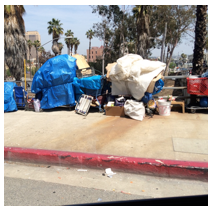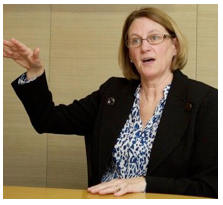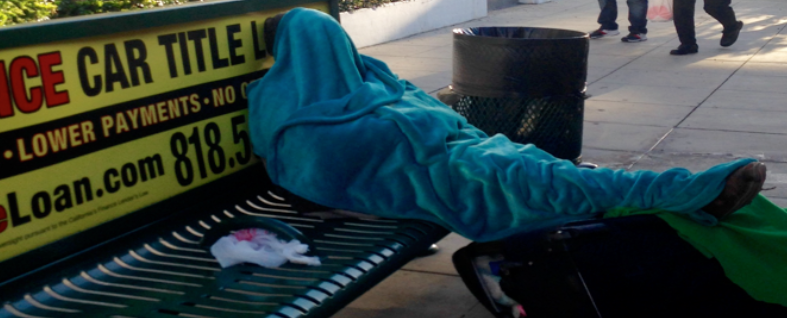Stopping CEQA Litigation is Critical to Reaching California Climate Goals
 PLANET WATCH--As the Executive Director of the California Infill Federation, and in my former role as the leader of the California State Senate, I was inundated with anecdotes about how often California Environmental Quality Act lawsuits were used to try to block or leverage (often for non-environmental purposes) environmentally beneficial projects like transit, infill housing, and infrastructure.
PLANET WATCH--As the Executive Director of the California Infill Federation, and in my former role as the leader of the California State Senate, I was inundated with anecdotes about how often California Environmental Quality Act lawsuits were used to try to block or leverage (often for non-environmental purposes) environmentally beneficial projects like transit, infill housing, and infrastructure.
Defenders of the CEQA status quo dismissed each anecdote as an irrelevant anomaly, and extolled CEQA’s policy value in protecting public health and the pristine natural environment. Serious political debate was thwarted by this anecdote-versus-dogma stalemate.
The stalemate was broken last summer when the law firm of Holland & Knight published “In the Name of the Environment,” a report describing the more than 600 CEQA lawsuits filed statewide over a three year period (2010-2012). The report confirmed the widespread litigation abuse of CEQA against environmentally beneficial and benign projects in existing California communities for non-environmental purposes. The report demonstrated that:
- Projects designed to advance California’s environmental policy objectives are the most frequent targets of CEQA lawsuits: transit is the most frequently challenged type of infrastructure project, renewable energy is the most frequently challenged type of industrial/utility project, and housing (especially higher density housing) is the most frequently challenged type of private sector project.
- Debunking claims by special interests that CEQA combats sprawl, the study shows that projects in infill locations within existing communities are the overwhelming target of CEQA lawsuits. For infill/greenfield projects, 80 percent are in infill locations, and only 20 percent are in greenfield locations. CEQA litigation abuse targets core urban services such as parks, schools, libraries and even senior housing.
- Sixty-four percent of those filing CEQA lawsuits are individuals or local “associations. CEQA litigation abuse is primarily the domain of Not In My Backyard (NIMBY) opponents and special interests such as competitors and labor unions seeking non-environmental outcomes. Only 13% of those filing CEQA lawsuits are environmental advocacy groups with a prior track record of filing CEQA lawsuits.
While the mainstream media reported these remarkable statistics, none of CEQA’s traditional status quo defender’s reported or even acknowledged the existence of this important report – until UCLA law professor Sean Hecht challenged one of the report’s core findings, which is that CEQA lawsuits are often aimed at precisely the types of projects that are critical to achieving California climate goals, including infill development, transit, and renewable energy. But while environmental advocates generally view addressing climate change as an urgent priority, Hecht’s critique boils down to, “CEQA may cause meddlesome delays to important climate projects, but so what?” And he entirely avoids the other core conclusion in the report, which calls for ending abuse of this great California environmental law by the many who file abusive lawsuits solely to advance a non-environmental agenda.
“Infill” is a Place, Not a Project
Hecht first takes exception to the report’s methodology of categorizing “infill” as a location, namely property within an existing community. The report demonstrates that of the CEQA lawsuits that challenge projects located in either “infill” sites (within existing cities and established communities in unincorporated counties) or “greenfield” sites (in unincorporated county areas that are often criticized as “sprawl” into agricultural or open space lands), a whopping 80% of CEQA lawsuits targeted projects in “infill” locations.
Hecht argues that “infill” should be defined not as a location but as a type of project, such as transit-oriented development. Mr. Hecht’s infill-as-project-type definition is wholly at odds with a broad range of established infill-as-a-location definition, including for example the California Governor’s Office of Planning and Research (OPR) and the US Green Building Council (which developed the LEED rating system for green buildings and neighborhoods, and whose members include for example the Natural Resources Defense Council).
It is also noteworthy that “In the Name of the Environment” uses the same definition of “infill” as has been used in other Holland & Knight CEQA studies published more than two years ago to track the pattern of projects (and judicial outcomes) for CEQA appellate court decisions; this consistent methodology allows for a direct comparison between reports. Although more than 60% of reported appellate court decisions over a 15-year study span involved projects on infill locations, the new study shows that an even higher percentage of infill projects are actually targeted by CEQA lawsuits.
CEQA Lawsuits Against Transit Projects Matter
Hecht next concludes that since “only four or five” transit projects were challenged during the study period, the report does not make the case that climate-critical transit projects were a notable target of CEQA lawsuits.
In fact, the report shows that anti-transit CEQA lawsuits were the most frequent type of public infrastructure CEQA lawsuit during the study period, surpassing both highway projects and local roadway projects, and that twelve transit projects were targeted by CEQA lawsuits: the Bay Area Berryessa Extension, Capitol Expressway Light Rail, Third Street Light Rail, San Francisco transit plan, Westside Subway Extension, Regional Connector Transit Corridor, Light Rail Maintenance Facility, Crenshaw-LAX Transit Corridor, Gold Line and Expo Line, Perris Valley Line Project, and the High Speed Rail Project.
Hecht’s dismissal of the importance of ending CEQA litigation abuse against transit ignores the tens of thousands of riders who remain unserved, and hundreds of tons of pollutants including greenhouse gas emissions that continue to be generated by traditional automobile commute patterns, by CEQA litigation abuse against transit projects.
Renewable Energy
Finally, as Hecht frankly acknowledges, “To be sure, there are legal impediments and regulatory hurdles that affect the development of renewable energy projects. But CEQA is not the only such impediment, nor the most serious one.”
Again, Hecht’s willingness to set aside the urgency of addressing climate challenges by simply accepting that renewable energy projects face “legal impediments and regulatory hurdles” that include CEQA demonstrates a complacency with the status quo that is fully at odds with the environmental community’s urgent pleas for dramatic change to address what they present as a climate emergency. Hecht simply – and without any rational basis – dismisses the relevance of CEQA lawsuits filed by competing unions seeking to control jobs at the same renewable energy facility. Why is this non-environmental abuse of California’s premier environmental statute, which has the effect of threatening or even derailing projects dependent on time-sensitive public funding, acceptable to established environmental advocates such as Hecht?
The Last Resort Rule
Hecht’s critique follows advice offered by other prominent law school professors such as Harvard Professor Alan Dershowitz:
“If you have the facts on your side, hammer the facts. If you have the law on your side, hammer the law. If you have neither the facts nor the law, hammer the table.”
Hecht has neither the law nor the facts on his side: the report unequivocally demonstrates that CEQA is in fact abused for non-environmental purposes, and CEQA litigation abuse is aimed at environmentally critical as well as environmental benign projects that are core elements of the state’s climate leadership efforts. Hecht should stop hammering the table. The report deserves a thoughtful dialogue, and CEQA deserves thoughtful reform to end CEQA litigation abuse for non-environmental purposes.
(Don Pereta is the Executive Director of the California Infill Federation, and Former President Pro Tem of the California State Senate. This piece was posted first at Fox and Hounds)
-cw
CityWatch
Vol 13 Issue 99
Pub: Dec 8, 2015

 TRANSIT TALK-Without a doubt, we Angelenos are the lucky ones … the soft and sunny surroundings and the diverse and creative vibe.
TRANSIT TALK-Without a doubt, we Angelenos are the lucky ones … the soft and sunny surroundings and the diverse and creative vibe.  MY TURN-Lately, there’s been lots of talk … and meetings … and promises coming from Los Angeles City Hall. But little to no action. Many of us familiar with City Hall history know that this is nothing new.
MY TURN-Lately, there’s been lots of talk … and meetings … and promises coming from Los Angeles City Hall. But little to no action. Many of us familiar with City Hall history know that this is nothing new. 

















